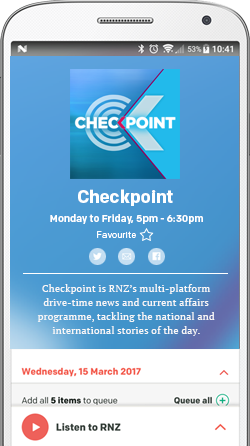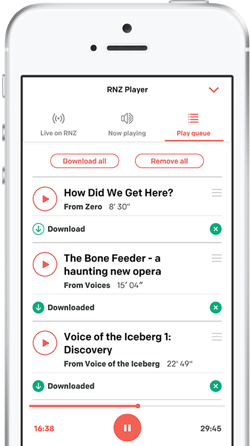Relief still not reaching CNMI Typhoon victims
Disaster authorities and NGO's in the Northern Marianas are still struggling to get relief aid to victims of the recent Typhoon Soudelor.
Transcript
Disaster authorities and NGO's in the Northern Marianas are still struggling to get relief aid to victims of the recent Typhoon Soudelor.
Government and NGO listings of individuals and families requesting relief are now in the thousands and continue to grow as more people come forward to seek help.
Our correspondent in the CNMI Mark Rabago says the demand for aid is raising tensions in CNMI with the Red Cross ordered by police to close down relief operations for a time on Wednesday after fights broke out amongst those queuing for aid.
He says the situation has since calmed down but authorities are still struggling to get aid to the people who need it the most.
The situation today is there is no more lines. People are being advised just to wait for the call, if you've signed up. So the Red Cross already promised that they'd be processing 250 people a day. When I say processing, they've been calling those people that applied for assistance. They're going to do a case study in how much they need. At the interview, they will be able to assert for them how much assistance they will be given. So that's the system right now, they're promising to process at least 250 to 300 people a day. I think yesterday there were already four thousand people signed up. Probably today there's more.
KOROI HAWKINS: Yes it looks like it's going to be probably a long process. What about the government relief, how is that coming along?
MR: Well the government relief is tied up with FEMA, the Federal Emergency Management Agency, and they've opened up a disaster relief centre over at Susupe. So there's been a hundred but these are people who already signed up online or over the phone. After they get verification, FEMA will be visiting their houses to assess the damage and then from there, find out if they're going to get ten thousand, twenty thousand or what amount for the damages because of Soudelor.
KH: And what about the normal day to day life: schools, businesses, is that returning to normal now?
MR: I think it's going to take months before everything goes back to normal. But the water situation has improved a bit. CUC (Commonwealth Utilities Corp) has opened up some other stations and pressurised water to the villages - but it's not 24/7, it's just a couple of hours a day. The lines at the gas stations have shortened. There's no lines anymore, so that's another good thing. Groceries, they're still using generator power so much of their meat stuff have been thrown away, and they're trying to get new stock now. The army is giving out free water. There's still long lines for bottled water for drinking water, and there's no ice on the island.
KH: Is there enough relief supply from the government and the NGOs, or is there a need for international assistance from elsewhere?
MR: I think the problem is, we have a lot of relief supplies, but how do you give it to the villagers or to people who need it most? Those who are in the shelters already were moved to other shelters so probably they got some. But those in the inner villagers who can't go to the shelters, who don't have cars, they have no way of giong to get supplies. So they have to find a system where they can really get to those remote areas where the survivors of the typhoon need relief the most.
To embed this content on your own webpage, cut and paste the following:
See terms of use.

